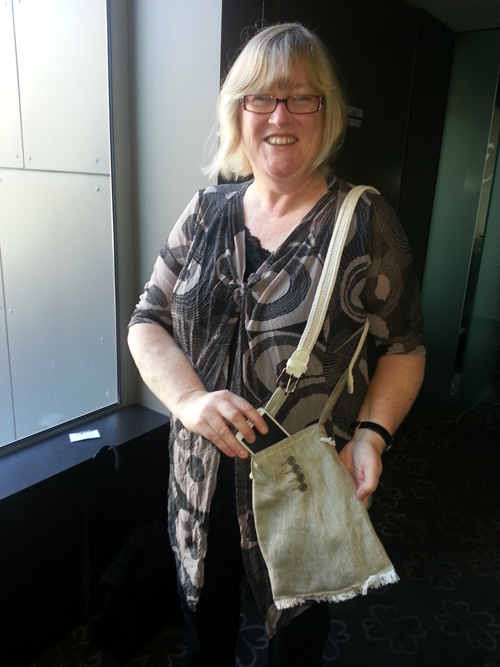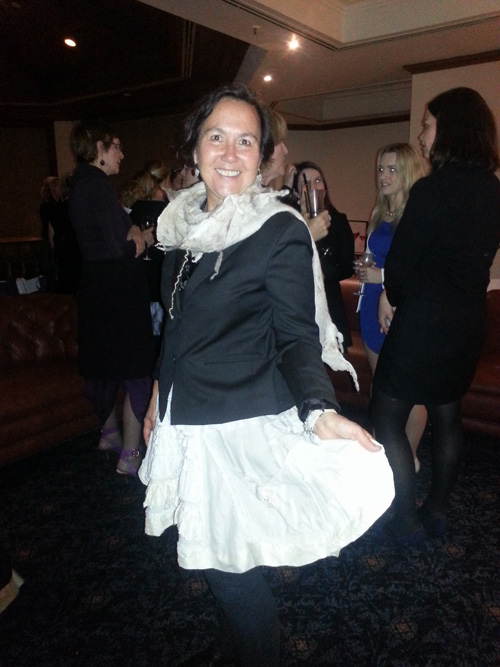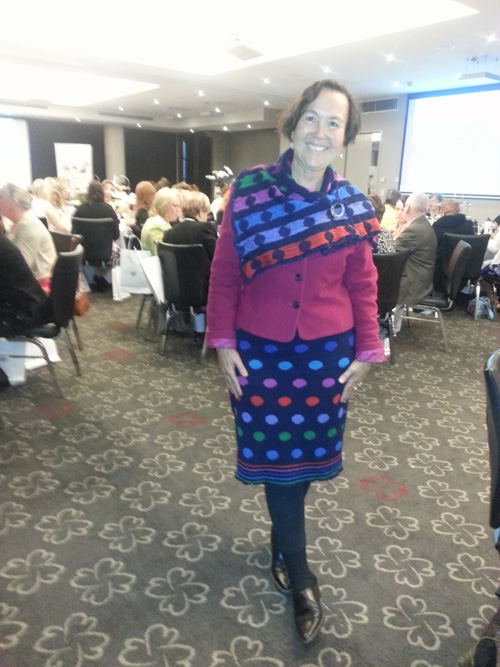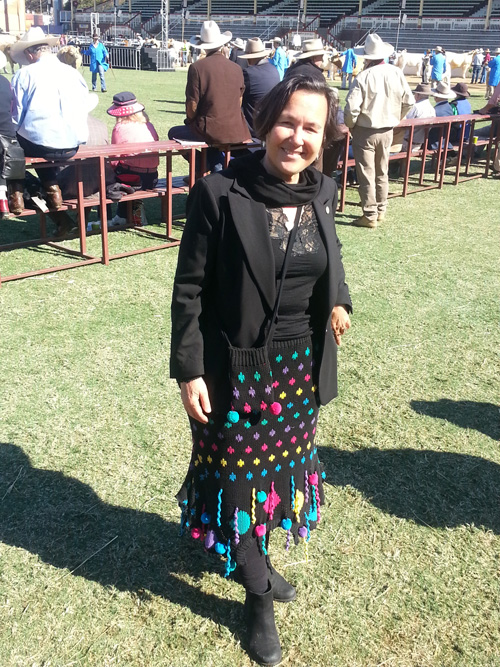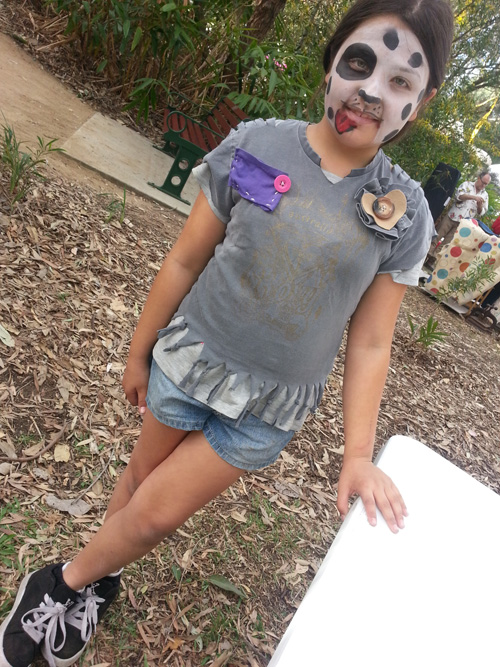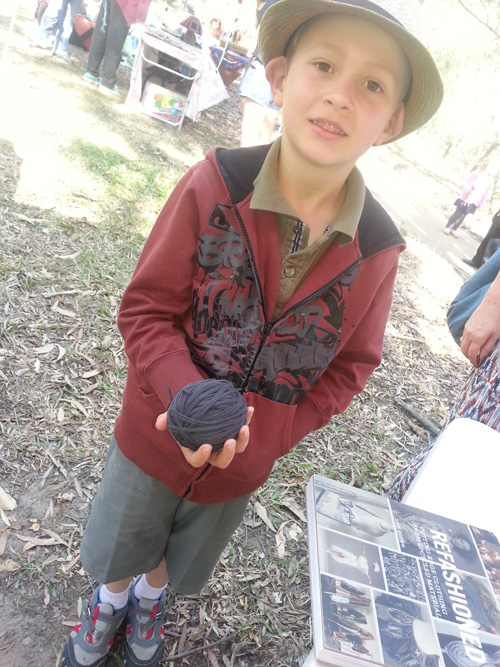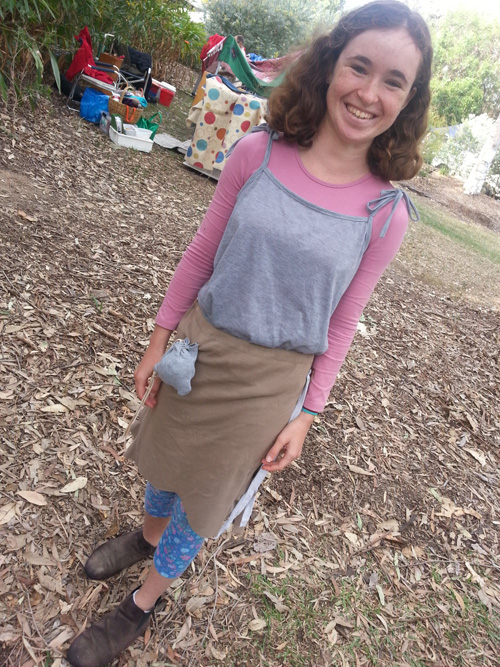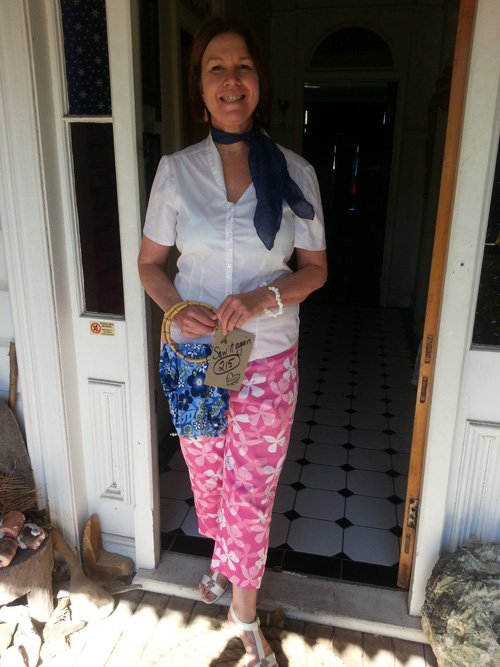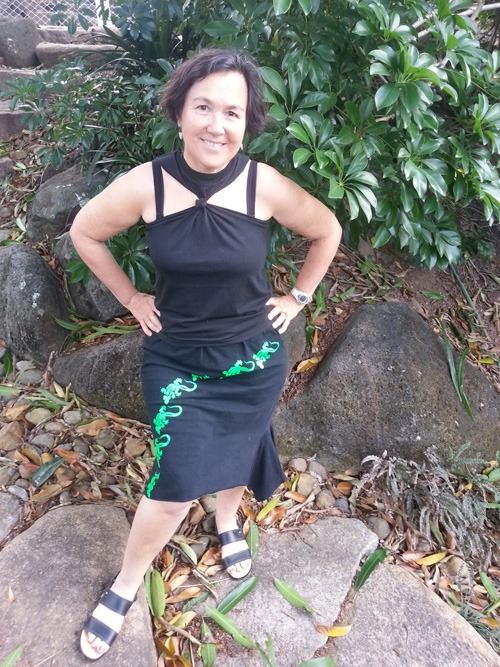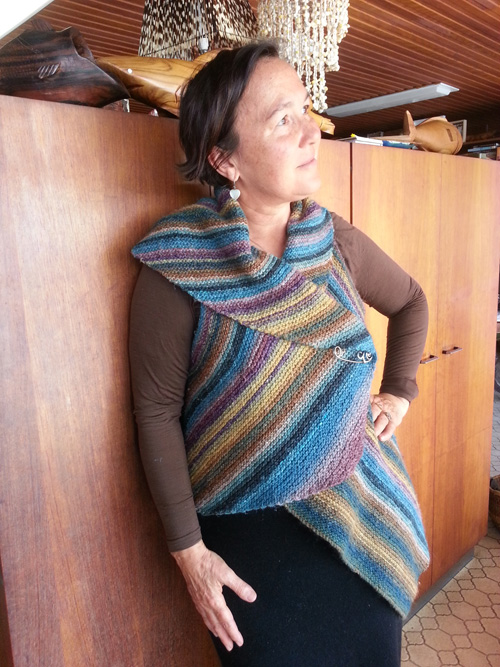 Part of the pleasure of op-shopping is about ‘the find’. I got this beautiful hand-knit for a very good price ($7) – considering the cost of the wool and the time involved in knitting it.
Part of the pleasure of op-shopping is about ‘the find’. I got this beautiful hand-knit for a very good price ($7) – considering the cost of the wool and the time involved in knitting it.
I love its shape, character and warmth, but it didn’t look very exciting languishing on the hanger. I brought it home, washed it, put a few hand-stitches in the armholes where the yarn seemed to have stretched a little, then secured it at the front with a big pin. I teamed it with an op-shop-found wool skirt, which had a couple of small holes which I mended on the sewing machine. I love the irregular shape and colour tones of this wrap, and enjoy wearing it very much.
